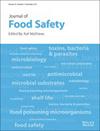Real-Time Scheduling and Control of Single-Arm Cluster Tools With Residency Time Constraint and Activity Time Variation by Using Resource-Oriented Petri Nets
Journal of Rapid Methods and Automation in Microbiology
Pub Date : 2019-01-01
DOI:10.4018/978-1-4666-4034-4.CH008
引用次数: 0
Abstract
In semiconductor manufacturing, when a wafer is processed, it requires unloading from its process module in a given time interval, otherwise it is scraped. This requirement is called wafer residency time constraints. Thus, it is crucial to schedule a cluster tool such that the wafer sojourn time in a process module is within a given time window to satisfy the wafer residency time constraints. Besides wafer residency time constraints, in a cluster tool, the activity time is subject to variation. The activity time variation can make a feasible schedule obtained under the assumption of deterministic activity times become infeasible. To solve this problem, it is important to reveal the wafer sojourn time fluctuations with bounded activity time variation. Such an issue is addressed in this chapter for single-arm cluster tools. A single-arm cluster tool is modeled by a resource-oriented Petri net to describe the wafer fabrication processes. Based on it, a real-time control policy is proposed such that it offsets the effect of the activity time variation as much as possible. Then, the wafer sojourn time delay in a process module is analyzed and analytical expressions are derived to calculate the upper bound. With the help of the real-time control policy and wafer sojourn time delay analysis results, schedulability conditions and scheduling algorithms for an off-line schedule are presented in this chapter. The schedulability conditions can be analytically checked. If schedulable, an off-line schedule can be analytically found. The off-line schedule together with the real-time control policy forms the real-time schedule for the system. It is optimal in terms of cycle time minimization. Examples are given to show the application of the proposed approach.基于资源导向Petri网的驻留时间约束和活动时间变化单臂集群工具实时调度与控制
在半导体制造中,当一个晶圆被加工时,它需要在给定的时间间隔内从它的处理模块中卸载,否则它就会被刮掉。这种要求称为晶圆驻留时间限制。因此,至关重要的是安排一个集群工具,使工艺模块中的晶圆停留时间在给定的时间窗口内,以满足晶圆停留时间的限制。除了晶圆驻留时间的限制外,在聚类工具中,活动时间也会发生变化。活动时间的变化会使在活动时间确定的假设下得到的可行计划变得不可行。为了解决这一问题,揭示有界活动时间变化下的晶圆停留时间波动是很重要的。本章将针对单臂集群工具解决这样的问题。利用面向资源的Petri网对单臂簇工具进行建模,以描述晶圆制造过程。在此基础上,提出了一种尽可能抵消活动时间变化影响的实时控制策略。然后,分析了工艺模块的晶圆逗留时间延迟,并推导出其上界的解析表达式。本章结合实时控制策略和时延分析结果,给出了离线调度的可调度性条件和调度算法。可调度性条件可以解析检验。如果可调度,则可以分析地找到离线调度。离线调度与实时控制策略共同构成系统的实时调度。它在周期时间最小化方面是最优的。通过实例说明了该方法的应用。
本文章由计算机程序翻译,如有差异,请以英文原文为准。
求助全文
约1分钟内获得全文
求助全文

 求助内容:
求助内容: 应助结果提醒方式:
应助结果提醒方式:


